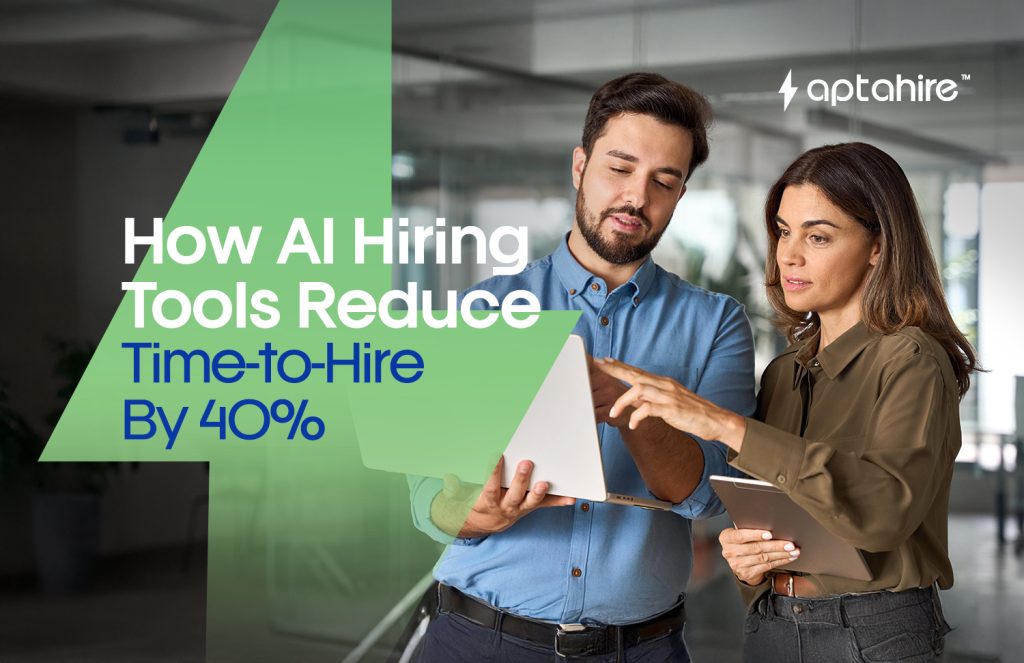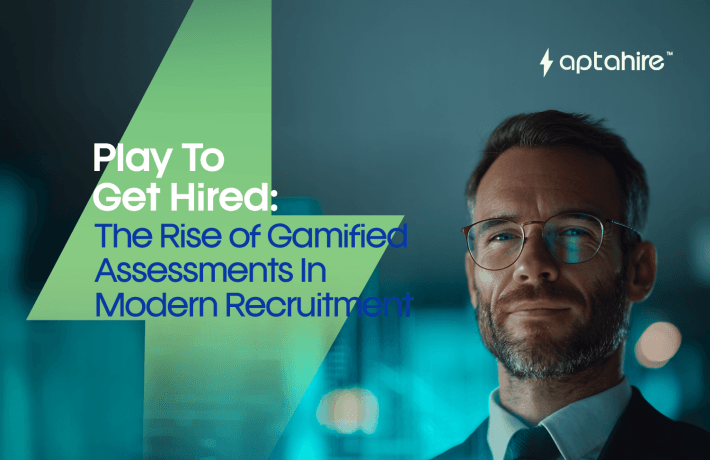How AI Hiring Tools Reduce Time-to-Hire by 40%

Let’s face it, hiring is hard.
You post the job, wait for resumes to roll in (most of them irrelevant), screen candidates, schedule interviews, send follow-up emails, loop in hiring managers… and before you know it, 6 weeks have flown by, and you’re still looking for “the one.”
Sound familiar?
What if we told you there’s a faster, smarter, and way more efficient way to hire? And no, it’s not a fairy tale, it’s AI.
In this blog, we’ll explore how AI hiring tools are slashing time-to-hire by up to 40%, why that’s a game-changer for businesses of all sizes, and how you can start hiring faster—without cutting corners.
First, What is Time-to-Hire (and Why Does It Matter)?
Time-to-hire is the number of days between when a candidate applies and when they accept your offer. It’s one of the most crucial hiring metrics because:
- A long hiring process frustrates top candidates (who are likely fielding multiple offers).
- It burns out your HR team, especially in high-growth or high-volume seasons.
- It increases cost per hire: think job ads, recruitment platforms, interview hours, and productivity lost due to the vacancy.
In short, every extra day you take to make a hire is costing your company time, money, and talent.
Enter AI Hiring Tools: The Ultimate Time-Savers
AI hiring tools use machine learning, data analysis, and automation to do what used to take humans hours or even days.
Here’s how they trim the fat off your hiring timeline:
1. Automated Resume Screening (No More Endless Scrolls)
Sifting through hundreds of resumes manually? No thanks.
AI-powered screening tools can instantly scan and shortlist candidates based on your job requirements: skills, experience, certifications, even soft skills like communication and leadership (yes, really).
Time saved: Up to 60–70% of the screening time.
Bonus: They’re consistent and unbiased. No caffeine crash, no bad days.
2. AI Chatbots That Pre-Qualify Candidates 24/7
AI chatbots can interact with applicants as soon as they apply, answering questions, asking pre-screening questions, and even scheduling interviews.
Imagine this: A candidate applies at 11 PM. Your AI chatbot immediately responds, asks 5 key questions, and schedules an interview for the next day.
You didn’t lift a finger, but you’re one step closer to your next hire.
3. One-Way Video Interviews + AI Analysis
Traditional interviews take time, scheduling alone can drag out for days.
AI tools now offer on-demand video interviews where candidates record responses to preset questions. Then, AI evaluates body language, facial cues, tone of voice, and answer quality.
Result? You can screen 10x more candidates in half the time, and only invest in face-to-face interviews for the best of the best.
4. Smart Interview Scheduling
Ever played email ping-pong trying to book an interview slot?
AI tools integrate with everyone’s calendars and automatically find and book mutual times. No more back-and-forths. Just smooth, effortless scheduling.
5. Predictive Analytics for Faster Decisions
Some tools can even predict how likely a candidate is to accept your offer, how well they might perform in your team culture, or whether they’ll stick around long-term.
Armed with this data, your hiring team can make confident decisions faster, cutting delays caused by second-guessing or repeated interviews.
Real Numbers: What Does a 40% Reduction Look Like?
Let’s do some quick math.
Imagine your average time-to-hire is 30 days.
With AI hiring tools:
30 days → 18 days
That’s 12 days saved per hire.
If you’re hiring 50 people a year, that’s 600 days of productivity you’re saving. Plus, faster hiring = happier teams = smoother onboarding = faster business growth.
Real-World Example: Meet “Aptahire”
Let’s take an actual tool like Aptahire, a modern AI hiring platform designed for speed and accuracy. Here’s how it helps reduce time-to-hire:
- Job descriptions auto-generated using role-specific prompts
- Instant AI scoring on candidate resumes
- Video interviews with body language detection
- Live dashboards for tracking every applicant’s journey
- Automated reminders and offer follow-ups
Businesses using Aptahire have reported up to 40–45% reductions in time-to-hire, especially in industries like tech, healthcare, and sales.
But Wait, Is Faster Always Better?
That’s a fair question.
Yes, speed is crucial, but not at the expense of quality. The beauty of AI hiring tools is that they help you move faster while enhancing quality, by removing human error, unconscious bias, and inconsistent processes.
It’s not just about hiring faster.
It’s about hiring smarter.
How to Get Started with AI Hiring Tools
If you’re thinking, “This all sounds great, but where do I start?”, you’re not alone. Here’s a simple roadmap:
Step 1: Audit your current hiring timeline
Where are the delays happening, resume screening? Interview coordination? Offer rollouts?
Step 2: Choose the right AI hiring tool
Look for features that match your needs. For SMBs, tools like Aptahire or Recruitee with AI plugins are cost-effective and scalable.
Step 3: Start with one part of the process
Even automating just resume screening or interview scheduling can shave days off your hiring cycle.
Step 4: Track improvements
Measure your new time-to-hire. You’ll be surprised how quickly you’ll see results.
Final Thoughts: Why Cutting Time-to-Hire by 40% with AI Isn’t Just “Nice to Have”, It’s a Competitive Advantage
Hiring has evolved. Gone are the days when companies could afford to take 4–6 weeks just to make a single hire. In today’s fast-paced, talent-driven economy, time is not just money, it’s opportunity.
When your hiring process is slow:
- You lose top candidates to faster-moving competitors.
- Your teams remain understaffed, affecting performance and morale.
- The cost of vacancy rises with every passing day.
- Your HR teams spend more time on admin work than on building strategy.
Now imagine flipping that script.
With AI hiring tools, you’re not just shaving off a few days, you’re transforming the entire hiring experience. You’re automating the tedious parts, accelerating decision-making, and giving your recruiters more time to focus on what really matters: building connections, assessing fit, and creating a great candidate experience.
A 40% reduction in time-to-hire means:
- You secure the best talent before anyone else.
- You reduce hiring costs (think fewer job board days, fewer interviews, less admin overhead).
- You increase productivity by filling key roles quickly.
- You future-proof your hiring process with data-driven decision-making and scalable automation.
But, the biggest benefit? Confidence.
- Confidence that your hiring process is working at its best.
- Confidence that your team is making informed, fast, and fair decisions.
- Confidence that your business can scale without bottlenecks.
In a world where the war for talent is only getting more competitive, AI isn’t just a tool, it’s your strategic partner. One that helps you move faster, hire better, and stay ahead of the curve.
So, if your team is still stuck in spreadsheets, manually screening resumes, or drowning in interview coordination emails, it’s time to rethink.
AI can’t replace human judgment. But it can absolutely enhance it.
And when used wisely, it can give you the most valuable hiring asset of all: speed without compromise.
FAQs
1. How does AI reduce time?
AI reduces time by automating repetitive, time-consuming tasks that humans would otherwise do manually. For example, instead of spending hours scanning through hundreds of resumes, AI can instantly analyze, filter, and rank candidates based on pre-set criteria. It can also automate emails, schedule interviews, and even answer candidate queries via chatbots. This streamlining means things that used to take days now take minutes, saving valuable time across departments.
2. How can AI help in the hiring process?
AI can help at every stage of the hiring process:
- Job posting: AI can generate optimized job descriptions to attract better candidates.
- Resume screening: It scans applications to shortlist the most suitable candidates.
- Chatbots: They interact with candidates in real time, collect basic information, and answer FAQs.
- Video interviews: AI can analyze tone, body language, and facial expressions for deeper candidate insights.
- Scheduling: It can coordinate interviews by syncing calendars automatically.
- Decision support: AI provides data-driven insights to help recruiters make more informed choices.
In short, AI enhances speed, accuracy, and consistency in hiring.
3. How can AI reduce bias in hiring?
AI, when designed ethically and trained on diverse data, can help reduce human biases by:
- Focusing only on relevant qualifications, not names, genders, ages, or other personal identifiers.
- Ensuring consistent evaluation of all candidates based on the same criteria.
- Removing gut-feel judgments and unconscious preferences that often creep into human decision-making.
- Using blind screening techniques where resumes are stripped of identifying information.
However, it’s important to note that AI is only as unbiased as the data it’s trained on. Responsible design, regular audits, and human oversight are crucial to truly reducing bias.
4. How does AI save time?
AI saves time by doing multiple tasks simultaneously and far more efficiently than humans. For instance:
- Screening hundreds of resumes in seconds
- Pre-qualifying candidates through automated questionnaires or chatbots
- Sending follow-up emails or notifications instantly
- Analyzing video interviews and flagging high-potential candidates
- Automating scheduling and reminders with no back-and-forth emails
This automation eliminates bottlenecks in the hiring pipeline, allowing companies to move much faster without sacrificing quality.
5. How will AI reduce jobs?
AI may replace some routine or repetitive roles, particularly those focused on manual tasks like data entry, resume screening, or scheduling. However, it’s more accurate to say AI will reshape jobs rather than eliminate them outright.
Instead of replacing recruiters, for example, AI frees them from mundane tasks so they can focus on strategy, relationship building, employer branding, and candidate experience, areas where human judgment and empathy are irreplaceable.
The future of work with AI isn’t about man vs. machine. It’s about man + machine, where humans work alongside AI to be faster, smarter, and more impactful.



